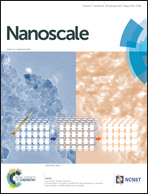Fabricating high performance lithium-ion batteries using bionanotechnology
Abstract
Designing, fabricating, and integrating nanomaterials are key to transferring nanoscale science into applicable nanotechnology. Many nanomaterials including amorphous and crystal structures are synthesized via biomineralization in biological systems. Amongst various techniques, bionanotechnology is an effective strategy to manufacture a variety of sophisticated inorganic nanomaterials with precise control over their chemical composition, crystal structure, and shape by means of genetic engineering and natural bioassemblies. This provides opportunities to use renewable natural resources to develop high performance lithium-ion batteries (LIBs). For LIBs, reducing the sizes and dimensions of electrode materials can boost Li+ ion and electron transfer in nanostructured electrodes. Recently, bionanotechnology has attracted great interest as a novel tool and approach, and a number of renewable biotemplate-based nanomaterials have been fabricated and used in LIBs. In this article, recent advances and mechanism studies in using bionanotechnology for high performance LIBs studies are thoroughly reviewed, covering two technical routes: (1) Designing and synthesizing composite cathodes, e.g. LiFePO4/C, Li3V2(PO4)3/C and LiMn2O4/C; and (2) designing and synthesizing composite anodes, e.g. NiO/C, Co3O4/C, MnO/C, α-Fe2O3 and nano-Si. This review will hopefully stimulate more extensive and insightful studies on using bionanotechnology for developing high-performance LIBs.


 Please wait while we load your content...
Please wait while we load your content...